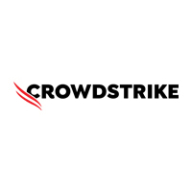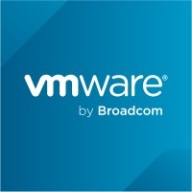

VMware Aria Automation and CrowdStrike Falcon Cloud Security compete in the security solution category. VMware Aria Automation has an edge in deployment flexibility and customer satisfaction, while CrowdStrike Falcon Cloud Security is often favored for its comprehensive feature set.
Features: VMware Aria Automation offers workflow automation, integration with various cloud environments, and deployment flexibility. CrowdStrike Falcon Cloud Security includes advanced threat intelligence, endpoint protection, and real-time monitoring.
Room for Improvement: VMware Aria Automation can enhance scalability, ease of customization, and usability. CrowdStrike Falcon Cloud Security needs improvements in data integration, custom reporting, and more advanced analytics features.
Ease of Deployment and Customer Service: VMware Aria Automation is known for user-friendly deployment and comprehensive customer support. CrowdStrike Falcon Cloud Security has a more complex setup but benefits from high-quality customer service that addresses deployment challenges effectively.
Pricing and ROI: VMware Aria Automation has competitive pricing with a moderate return on investment. CrowdStrike Falcon Cloud Security involves a higher initial investment but provides strong ROI due to its extensive feature set.
More than 12 million vulnerabilities have been identified and resolved while working with CrowdStrike Falcon Cloud Security over the past 10 years.
It is an expense we are willing to pay to conform to Cyber Essentials Plus and demonstrate responsibility in protecting our data and that of our partners.
Based on my experience with CrowdStrike Falcon Cloud Security's technical support, I would rate them a solid 10 out of 10.
I have contacted customer service, and they are fast.
Technical support is quite good.
We never had major issues to report or request support.
It is deployed across multiple departments and multiple locations.
CrowdStrike Falcon Cloud Security is indeed highly scalable, ideally for enterprises with a minimum of 2,000 servers to ensure cost efficiency and easier setup.
Occasionally, when the workload increases, it slows down considerably and sometimes becomes unresponsive.
When evaluating the stability of CrowdStrike Falcon Cloud Security, their partnerships with all major cloud service providers ensure their servers are optimally positioned.
If CrowdStrike Falcon Cloud Security could implement pushing out remediation from the sensor installed on machines, that would be beneficial.
The user interface needs improvement as it's sometimes difficult to locate specific dashboards or reports.
The improvements needed for CrowdStrike Falcon Cloud Security include reducing its high cost, which is currently quite expensive.
It operates for both of my products, however, as a product, it is complicated to integrate and automate with other products.
The pricing for CrowdStrike Falcon Cloud Security is reasonable, especially for small companies with limited budgets.
No additional cost for maintenance or support; it's all included in the quotation.
The cost of CrowdStrike Falcon Cloud Security is currently quite high, which is an area that needs improvement.
It automatically blocks duplication and activities that could result in data loss, effectively preventing unintended copying of data to personal devices.
The threat detection capability of CrowdStrike Falcon Cloud Security has always been the major seller, and it works effectively.
The most effective feature is the machine learning aspect, which detects unauthorized scripts and potential data exfiltration.
It helps us automate the workflow of creating many VMs and the TensorFlow key method.
We have strong regulations for maintaining compliance and mitigating risks with this product.
| Product | Market Share (%) |
|---|---|
| CrowdStrike Falcon Cloud Security | 4.9% |
| VMware Aria Automation | 0.4% |
| Other | 94.7% |


| Company Size | Count |
|---|---|
| Small Business | 13 |
| Midsize Enterprise | 6 |
| Large Enterprise | 12 |
| Company Size | Count |
|---|---|
| Small Business | 32 |
| Midsize Enterprise | 24 |
| Large Enterprise | 130 |
CrowdStrike Falcon Cloud Security is a platform of cloud security solutions aimed at protecting organizations from breaches while simplifying cloud security management. The unified platform combines several cloud security functionalities for comprehensive protection. Built on the CrowdStrike Falcon Platform, it leverages the powerful agent and technology used in CrowdStrike's renowned endpoint protection solutions, extending its capabilities seamlessly to cloud environments.
CrowdStrike Falcon Cloud Security is designed to be a shield for the cloud infrastructure. One of its key strengths is its ability to monitor cloud workloads for potential breaches and attacks. It doesn't matter if you're running virtual machines, containers, or a combination of both across different cloud providers – Falcon Cloud Security offers visibility and protection. Additionally, it works tirelessly to pinpoint misconfigurations or vulnerabilities in your cloud setup, proactively stopping issues before they become full-blown security incidents. Compliance becomes easier too, as it can check if your deployments meet the requirements of various industry standards and regulations.
If you heavily utilize containers and Kubernetes, Falcon Cloud Security has you covered. It delves deep into container images and running containers to spot weaknesses and potential threats, helping you secure your containerized applications from the moment they're developed to when they're up and running. Finally, it tackles the often messy world of permissions in the cloud. Falcon Cloud Security analyzes identities and their attached permissions, ensuring that the principle of least privilege is followed and sensitive data isn't exposed due to overly broad access rights.
In essence, CrowdStrike Falcon Cloud Security aims to simplify the complexities of cloud security by consolidating tools, providing a centralized view of your risks and threats, and delivering advanced protection that blends seamlessly with your development processes.
Based on the interviews we conducted with CrowdStrike Falcon Cloud Security users, overall, the sentiment is positive. Users praise the solution's efficacy in detecting and preventing threats, its ease of use, scalability, stability, and integration with existing systems. There were also mentions of areas for improvement, such as the pricing, the user interface, and customer support.
VMware Aria Automation is a cloud management tool that allows companies to simplify their cloud experience through a modern automation platform. The solution is designed to deliver self-service clouds, multi-cloud automation with governance, and DevOps-based security and infrastructure management. It helps organizations improve IT agility, efficiency, and productivity through its various features.
VMware Aria Automation has multiple use cases that include the following:
VMware Aria Automation Features
VMware Aria Automation has various features that allow users to easily perform operations. Some of the solution's capacities include:
VMware Aria Automation Benefits
VMware Aria Automation offers its users various benefits. Some of the biggest advantages that the solution brings to companies that utilize it include:
Reviews from Real Users
Awais J., CTO/CEO at a tech services company, likes VMware Aria Automation because it saves a lot of time, provides more visibility, and has extensive automation capabilities.
An IT consultant at a government rates VMware Aria Automation highly because the product gives you flexibility to analyze and consume resources.
We monitor all Cloud Security Posture Management (CSPM) reviews to prevent fraudulent reviews and keep review quality high. We do not post reviews by company employees or direct competitors. We validate each review for authenticity via cross-reference with LinkedIn, and personal follow-up with the reviewer when necessary.